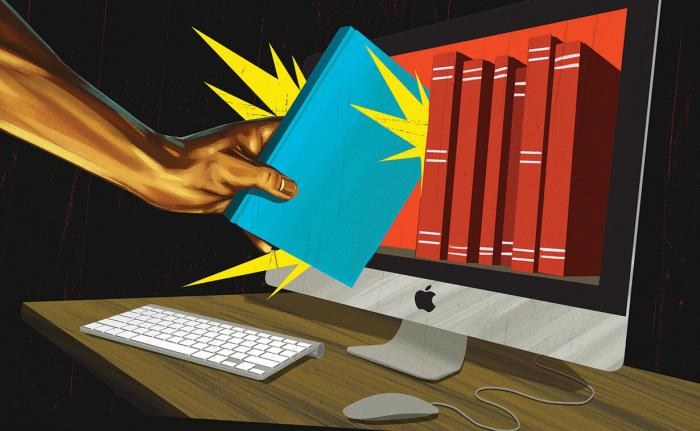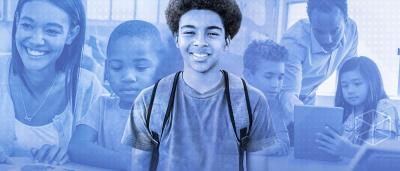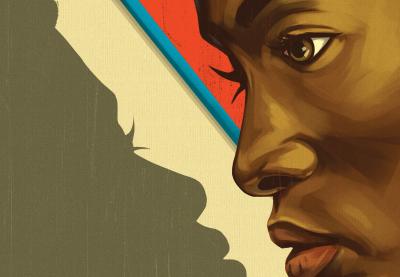Zetta Elliott graduated from high school never having been assigned a book by an author of color. When she finally was—during her last semester of university—it brought her to a disturbing realization. “I had been erasing myself when I read,” she says.
Determined to help other children of color grow up with books that reflect their experiences, Elliott began searching out stories with diverse characters. When that wasn’t enough, she began writing children’s books herself.
Elliott now works with the Brooklyn Prospect Charter School to produce an anthology of middle-grade student writing. Maybe the anthology will be picked up by a mainstream publisher, maybe it won’t. It doesn’t really matter to Elliott. For her, the solution to the lack of diversity in children’s books is simple: Stop begging at the doors of traditional publishers, and publish diverse books yourself. It sounds lofty, but thanks to the explosion of digital publishing tools, it’s now possible for just about anyone to publish a professional-looking book—simply and affordably, online or in print.

The Time Is Now
For educators who are juggling a million responsibilities, it’s tempting to say, “Yes, the lack of diverse books is a problem, but the publishing industry is improving.”
It’s true that publishers are slowly responding to demands for more diverse literature. A few, such as Lee & Low, even focus exclusively on promoting multicultural titles and authors. But according to the Cooperative Children’s Book Center at the University of Wisconsin-Madison, the fact remains that in 2014 only 5.8 percent of published children’s books were written by authors of color, and only 7.9 percent were about people of color. Those numbers represent a slight increase from the previous year, but they still do not reflect the diversity of young readers in the United States.
Why is this a problem? When children of color are bombarded with stories about white middle-class characters, “They’re being told that this is how things are, how things ought to be, and if your life is different than this, then your life is somehow inferior,” says Elliott.
Educators can use classroom publishing to validate the experiences of all students and to introduce critical literacy.
She recounts a recent experience at a conference: An educator from a majority-Samoan high school approached her, distressed because her school library had no books by or about Samoans.
It’s the perfect example of why educators have to look beyond mainstream publishers, says Elliott. “There’s a pretty good chance that books that reflect the reality of those Samoan high school students aren’t going to end up on The New York Times’ best-seller list, but those books have to exist, because those kids need mirrors.”
And they need them now. That’s where digital publishing comes in. “Why not gather together in some sort of collective,” says Elliott, “so a teacher can say, ‘All right, I have this class of 30 Samoan kids. Let’s start writing some stories. Let’s publish an anthology.’”
That sort of departure wasn’t feasible 20 years ago, but today it is. Elliott has used print-on-demand publishing tools to make many of her books available—and popular—without help from a traditional publisher. Teachers use cloud-based tools like Storybird or apps like Bitstrips to publish students’ work. Most educators have access to diverse written resources that reside on the Web, often available for free.
Classroom to Publishing House
The flexibility inherent in this broad spectrum of digital tools means that educators can use classroom publishing to validate the experiences of all students and to introduce critical literacy.
Mariela Nuñez-Janes, former co-director of the ethnic studies program at the University of North Texas, has extensively researched the need for Latina and Latino students to see their own experiences in their schooling. She knew that digital storytelling was one way to help students talk about their lives, so she teamed up with Tim Sanchez, a high school physics teacher, to make it happen.
Both Nuñez-Janes and Sanchez say that the storytelling process is central to classroom publishing. Their students join a story circle to share their experiences and help each other decide where their strongest stories lie. Then they write. It’s a delicate process, says Sanchez.“You don’t really know what’s going to happen because you don’t know what’s in the room until you ask.”
Meeting this challenge pays off, says Nuñez-Janes. In schools where students’ experiences are often disregarded, “to be able to connect beyond the façade, to be able to tell a story that’s deeply personal, challenges ... the dehumanizing that’s happening in classrooms.”
Nuñez-Janes and Sanchez’s students digitally distribute their stories to their families, friends, the local community and the online world via videos composed of written narratives and photos. Both educators emphasize, though, that any publishing platform would work just as well—it’s the publishing of the stories themselves that’s important.
Caitlin Kingsley, a social studies teacher at an affluent middle school, uses digital publishing to meet a different teaching goal: introducing her students to critical literacy. She and her students create children’s books that question the traditional Thanksgiving story. Like Nuñez-Janes and Sanchez, Kingsley says that her process is one that can be easily replicated in any classroom.
First, she presents a mainstream children’s book about Thanksgiving to her students and asks them to evaluate the story. The students research portions of the narrative they think might be questionable. “By practicing critical literacy, ... my students were able to begin to transition from being blind consumers of information,” says Kingsley.
After the research is complete and the class has discussed the perspectives missing from the traditional Thanksgiving story, students write their own, more accurate stories. Finally, they choose an online digital publishing platform and use it to create their books.
Many teachers already conduct projects like these in their classrooms. The key says Elliott, is taking the stories to publication. “Students know that their work ... is becoming part of an official historical record,” she says. “It may not be the historical record, it may not end up in a textbook, ... but it’s available online and will be for some time to come.”
Digital Publishing Tools
Give these publishing platforms a try in your classroom. Don’t forget to keep an eye out for new titles by diverse authors—each of these sites also offers independently published stories and books.
Storybird is a great tool for educators who want to dip a toe into the digital publishing world. Create books using an impressive collection of illustrations, and share via social media or the Storybird website. Online creation and sharing are free.
Bitstrips is a comic-strip app with lots of illustration flexibility. Creation and sharing are free.
Wattpad allows users to upload longer books chapter by chapter in a social media environment. No illustrations are available, but creation and sharing are free.
Lulu is a good option for educators looking to create and sell books independently. It’s more complex than some other self-publishing sites but produces higher-quality results and offers selling tools as well. E-book creation and listing on the website are free.

